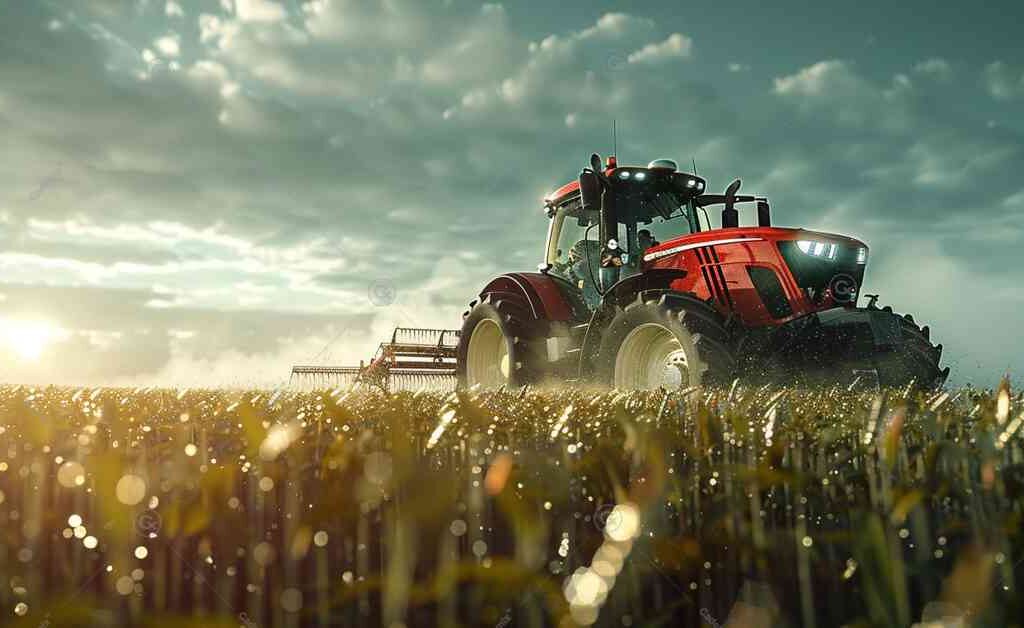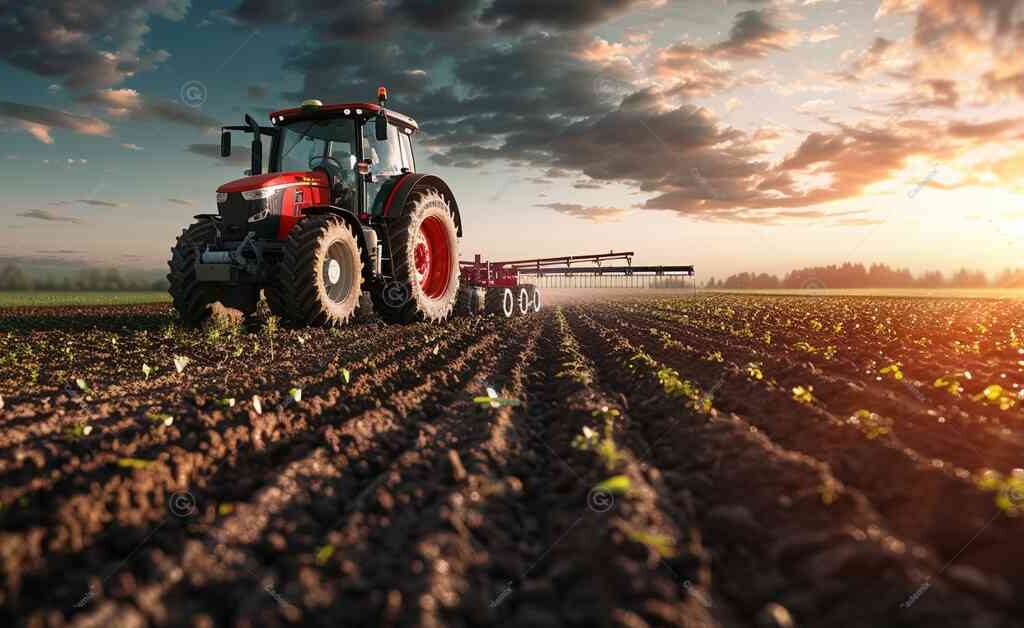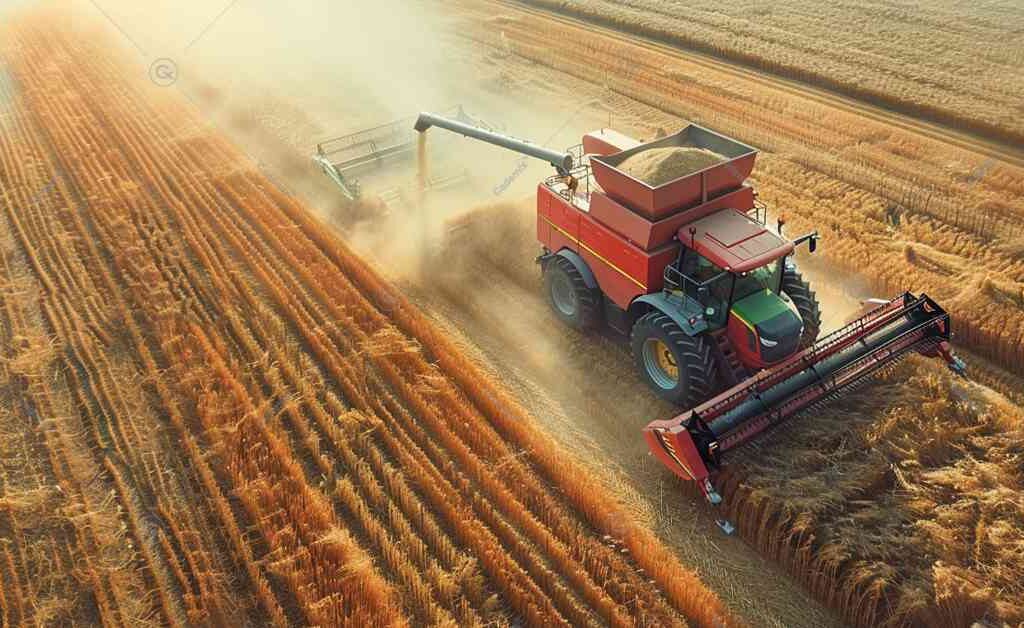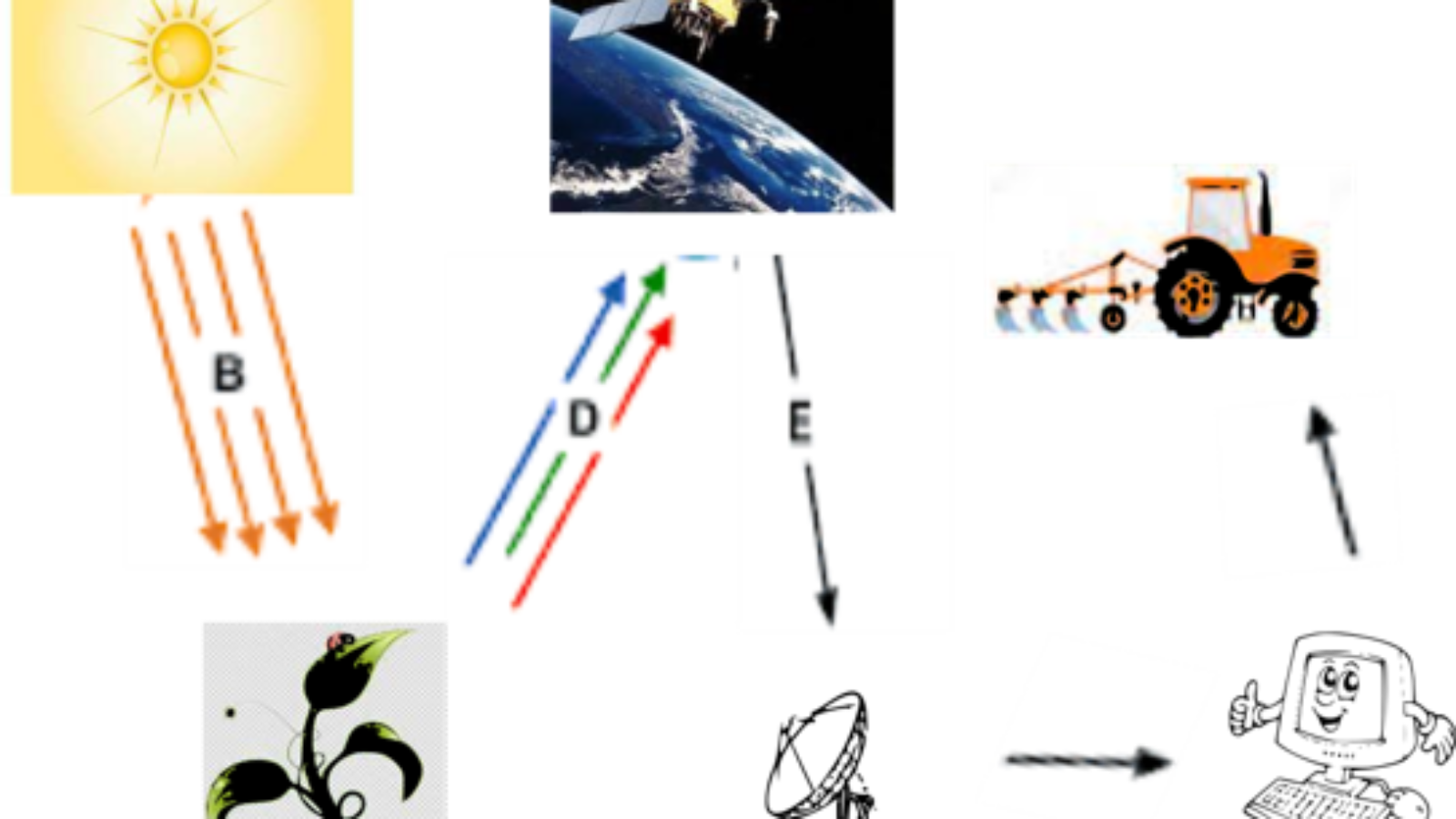Precision farming systems represent a significant technological advancement in agriculture, enabling farmers to optimize crop yields, reduce waste, and manage resources more efficiently. This article delves into the components and benefits of precision farming, offering insights into how it transforms traditional farming practices through data-driven decision-making, advanced machinery, and innovative software solutions.
Cademix Instute of Technology-Agriculture Editorial Board
Keywords: precision farming system, agriculture technology, crop management, resource optimization, smart farming, agricultural efficiency

Introduction to Precision Farming Systems
Precision farming systems, also known as precision agriculture, integrate advanced technologies such as GPS, IoT, drones, and data analytics to enhance agricultural productivity and sustainability. This approach allows farmers to monitor crop conditions in real time, apply precise amounts of inputs like water and fertilizer, and manage their fields with unprecedented accuracy. The integration of these technologies not only improves the efficiency of farming practices but also promotes environmental sustainability by reducing waste and conserving resources.
As the global population continues to grow, the demand for food production is increasing. Precision farming offers a solution by enabling farmers to produce more with less. By harnessing the power of technology, farmers can optimize every aspect of crop production, from planting to harvesting, ensuring that each step is as efficient and effective as possible. This modern approach to agriculture is essential for meeting the future food needs of the world while minimizing the environmental impact.
Components of Precision Farming Systems
GPS and Geospatial Technologies
Global Positioning Systems (GPS) and geospatial technologies are foundational to precision farming. These tools enable farmers to map fields accurately, track equipment, and monitor crop progress. By using GPS, farmers can create detailed field maps that inform planting, fertilizing, and harvesting strategies. For instance, GPS-guided tractors can plant seeds with exact spacing and depth, ensuring optimal growth conditions for each crop.
Field mapping using GPS technology is essential for identifying soil variability within a field. Farmers can use this information to implement site-specific management practices, such as variable rate fertilization, which applies the precise amount of fertilizer needed for each area. This targeted approach reduces the overall use of fertilizers, lowering costs and minimizing environmental impact. Additionally, GPS tracking of equipment ensures efficient use and maintenance, reducing downtime and increasing productivity.
The use of geospatial technologies extends beyond field mapping and equipment tracking. These technologies also play a crucial role in monitoring crop health and growth. By analyzing spatial data, farmers can detect patterns and trends that may indicate potential problems, such as pest infestations or nutrient deficiencies. Early detection allows for timely interventions, preventing crop losses and ensuring higher yields.
IoT Devices and Sensors
The Internet of Things (IoT) involves interconnected devices and sensors that collect and transmit data from the field to farmers. These devices can measure soil moisture, temperature, humidity, and other critical parameters. For example, soil sensors provide real-time data on soil conditions, helping farmers make informed decisions about irrigation and fertilization.
IoT devices enable precision irrigation, which optimizes water use by delivering the right amount of water to each plant based on its needs. This method not only conserves water but also promotes healthier plant growth by preventing over- or under-watering. Additionally, weather stations equipped with IoT sensors monitor local weather conditions, providing valuable data for planning planting and harvesting schedules. By integrating weather data with other field information, farmers can make more accurate and timely decisions.
Furthermore, IoT devices facilitate continuous monitoring of crop health. Sensors can detect changes in plant physiology, such as variations in leaf temperature or chlorophyll levels, which may indicate stress or disease. This early detection allows farmers to take corrective actions before significant damage occurs. Overall, the use of IoT devices in precision farming enhances the ability to manage resources efficiently and improve crop yields.
Drones and Aerial Imagery
Drones equipped with cameras and sensors offer aerial imagery and multispectral analysis of crops. This technology helps in identifying issues like pest infestations, nutrient deficiencies, and water stress. For example, drones can capture high-resolution images that reveal variations in plant health, enabling farmers to target specific areas for treatment.
Crop monitoring with drones provides a comprehensive view of the field, allowing farmers to assess crop conditions quickly and accurately. By analyzing aerial images, farmers can detect problems that may not be visible from the ground, such as subtle changes in plant color or growth patterns. This information is crucial for making informed decisions about pest control, irrigation, and fertilization.
In addition to crop monitoring, drones are also used for precision spraying of fertilizers and pesticides. This method ensures that chemicals are applied only where needed, reducing waste and environmental impact. Aerial spraying with drones is particularly beneficial for large fields or areas that are difficult to access with traditional equipment. By using drones, farmers can achieve more precise and efficient application of inputs, resulting in better crop performance and reduced costs.

Data Analytics and Farm Management Software
Data analytics and farm management software are crucial for interpreting the vast amounts of data collected from sensors and devices. These tools help farmers make informed decisions based on predictive analytics and trend analysis. For instance, yield prediction models can forecast crop yields, helping farmers plan their harvests and market strategies.
Farm management software integrates data from various sources, providing a comprehensive view of the farm’s operations. This integration allows farmers to monitor and manage all aspects of their farm from a single platform. For example, software can track the use of inputs, monitor equipment performance, and analyze financial data. This holistic approach helps farmers identify areas for improvement and optimize their overall farm management.
In addition to operational management, data analytics also play a crucial role in resource management. By analyzing data on soil conditions, weather patterns, and crop performance, farmers can optimize the use of resources like water, fertilizer, and labor. For example, data-driven irrigation schedules ensure that water is used efficiently, reducing waste and improving crop health. Similarly, variable rate technology applies the precise amount of fertilizer needed for each area, minimizing environmental impact and reducing costs.
Benefits of Precision Farming Systems
Increased Crop Yields
By utilizing precision farming techniques, farmers can achieve higher crop yields through optimized planting, irrigation, and fertilization strategies. Applying the right amount of inputs at the right time enhances crop growth and productivity. Precision equipment minimizes overlaps in planting and spraying, leading to uniform crop stands and reducing input wastage.
Targeted inputs ensure that each plant receives the necessary nutrients and water for optimal growth. For example, variable rate technology allows farmers to apply fertilizers and pesticides only where needed, based on real-time data from soil and crop sensors. This targeted approach not only increases yields but also reduces costs by minimizing the use of inputs.
Moreover, precision farming techniques improve crop quality by ensuring consistent growing conditions across the field. Uniform crop stands result in more even ripening and higher-quality produce. This consistency is particularly important for crops that are sold in markets where appearance and quality are critical factors. By producing higher-quality crops, farmers can achieve better prices and increase their profitability.
Resource Efficiency
Precision farming promotes efficient use of resources, which is crucial for sustainable agriculture. Precision irrigation systems reduce water wastage by delivering water directly to the plant roots. Variable rate technology ensures that fertilizers are applied only where needed, reducing runoff and environmental impact. These methods contribute to more sustainable farming practices and lower input costs.
Efficient use of water is particularly important in regions where water scarcity is a concern. Precision irrigation systems, such as drip irrigation and pivot systems, optimize water use by delivering the exact amount of water needed by each plant. This method not only conserves water but also promotes healthier plant growth by preventing over- or under-watering.
In addition to water, precision farming also enhances the efficient use of fertilizers and pesticides. By using data-driven application methods, farmers can reduce the overall use of chemicals, minimizing their impact on the environment. This approach not only benefits the environment but also lowers input costs, making farming more economically viable.
Cost Savings
While the initial investment in precision farming technology can be high, the long-term savings are significant. Efficient use of seeds, water, and fertilizers lowers overall input costs. Automation and precise management reduce the need for manual labor, further cutting costs. These savings can offset the initial investment and lead to increased profitability over time.
Precision farming technologies enable farmers to optimize their use of inputs, reducing waste and lowering costs. For example, variable rate technology ensures that seeds, fertilizers, and pesticides are applied only where needed, based on real-time data from sensors and devices. This targeted approach reduces the overall use of inputs, lowering costs and improving efficiency.
Moreover, automation and precision management reduce the need for manual labor, further cutting costs. For example, GPS-guided tractors can perform planting, fertilizing, and harvesting operations with high accuracy, reducing the need for manual intervention. This automation not only improves efficiency but also frees up labor for other tasks, increasing overall productivity.
Environmental Sustainability
Precision farming contributes to environmental sustainability by minimizing the negative impacts of traditional farming practices. Precision application of pesticides and fertilizers reduces chemical runoff into waterways. Sustainable practices enhance soil health, promoting long-term agricultural productivity. These benefits make precision farming an essential tool for sustainable agriculture.
Reducing chemical use is one of the key environmental benefits of precision farming. By applying fertilizers and pesticides only where needed, farmers can minimize the risk of chemical runoff into waterways, protecting water quality and aquatic ecosystems. This targeted approach also reduces the overall use of chemicals, lowering the risk of soil and water contamination.
In addition to reducing chemical use, precision farming also promotes soil health through sustainable practices. For example, precision tillage techniques minimize soil disturbance, preserving soil structure and reducing erosion. Similarly, crop rotation and cover cropping improve soil fertility and reduce the need for chemical inputs. These practices enhance long-term agricultural productivity, ensuring that farmland remains productive for future generations.
Implementing Precision Farming Systems
Assessment and Planning
Before implementing a precision farming system, it is essential to assess the specific needs of the farm and plan accordingly. Conduct comprehensive soil tests to understand nutrient levels and soil conditions. Create detailed maps of the fields to identify areas with different soil types and conditions. This information is crucial for developing a tailored precision farming plan that addresses the unique needs of each field.
Soil testing is
a critical first step in the implementation process. By analyzing soil samples, farmers can determine the nutrient content and pH levels of their fields. This information is essential for developing a fertilization plan that meets the specific needs of the soil and crops. In addition, soil testing can identify potential problems, such as nutrient deficiencies or imbalances, allowing for timely corrective actions.
Field mapping is another essential component of the planning process. By creating detailed maps of the fields, farmers can identify areas with different soil types and conditions. This information is crucial for developing a precision farming plan that addresses the unique needs of each field. For example, farmers can implement variable rate fertilization based on the specific nutrient requirements of each area, optimizing the use of fertilizers and improving crop yields.
Technology Integration
Integrating the right technologies is crucial for the success of precision farming. Choose sensors that provide the necessary data for your crops and soil conditions. Implement software that can analyze data and provide actionable insights. By selecting the appropriate technologies and integrating them effectively, farmers can maximize the benefits of precision farming.
Sensor selection is a critical aspect of technology integration. Different crops and soil conditions require different types of sensors to collect the necessary data. For example, soil moisture sensors are essential for precision irrigation, while nutrient sensors are crucial for precision fertilization. By selecting the appropriate sensors, farmers can collect accurate and relevant data to inform their management decisions.
Farm management software is another essential component of technology integration. This software integrates data from various sources, providing a comprehensive view of the farm’s operations. By analyzing this data, farmers can make informed decisions about irrigation, fertilization, pest control, and other management practices. This data-driven approach enhances the efficiency and effectiveness of farming operations, leading to improved crop yields and resource management.
Training and Support
Training and ongoing support are vital for farmers to effectively use precision farming technologies. Participate in training sessions to understand the operation and maintenance of precision equipment. Ensure access to technical support for troubleshooting and system updates. By investing in training and support, farmers can maximize the benefits of precision farming and ensure the long-term success of their operations.
Training is essential for understanding the operation and maintenance of precision farming technologies. Farmers should participate in workshops, seminars, and online courses to learn about the latest advancements in precision agriculture. These training sessions provide valuable knowledge and skills that are crucial for implementing and managing precision farming systems effectively.
Technical support is another critical aspect of successful precision farming. Access to technical support ensures that farmers can troubleshoot and resolve any issues that arise with their equipment and software. This support is essential for maintaining the functionality and performance of precision farming technologies. By investing in training and support, farmers can maximize the benefits of precision farming and ensure the long-term success of their operations.

Case Studies in Precision Farming
Large-Scale Farming in the United States
In the United States, large-scale farms have successfully implemented precision farming techniques to enhance productivity and sustainability. For instance, farms using precision agriculture have reported yield increases of up to 25%. Efficient use of inputs has led to cost reductions of 15-20%. These results demonstrate the significant benefits of precision farming for large-scale operations.
Large-scale farms in the United States have adopted a range of precision farming technologies, including GPS-guided tractors, IoT devices, and data analytics software. These technologies enable farmers to optimize their use of inputs, improve crop yields, and reduce costs. For example, GPS-guided tractors can perform planting, fertilizing, and harvesting operations with high accuracy, reducing the need for manual intervention and increasing efficiency.
In addition to improving efficiency and productivity, precision farming also enhances sustainability for large-scale operations. By using data-driven application methods, farmers can reduce the overall use of chemicals, minimizing their impact on the environment. This approach not only benefits the environment but also improves the long-term viability of farming operations. The success of precision farming on large-scale farms in the United States demonstrates its potential to revolutionize agriculture and promote sustainable practices.
Smallholder Farms in Africa
Precision farming is also making a difference in smallholder farms in Africa, where resource constraints are significant. For example, precision irrigation has improved water use efficiency by 30%. Drones and sensors help smallholders monitor crop health and address issues promptly. These advancements are crucial for improving the productivity and sustainability of smallholder farms.
Smallholder farmers in Africa face unique challenges, including limited access to resources and technology. However, precision farming offers a solution by enabling smallholders to optimize their use of inputs and improve crop yields. For example, precision irrigation systems deliver the right amount of water to each plant based on its needs, conserving water and promoting healthier plant growth. This method is particularly beneficial in regions where water scarcity is a concern.
In addition to precision irrigation, drones and sensors provide valuable data for smallholder farmers. By monitoring crop health and detecting potential problems early, farmers can take timely corrective actions and prevent crop losses. This data-driven approach enhances the ability of smallholders to manage their farms more efficiently and sustainably. The success of precision farming on smallholder farms in Africa demonstrates its potential to improve agricultural productivity and sustainability in resource-constrained environments.
We suggest you to also read Precision Farming: Advancing Agriculture Through Technological Innovations.

Conclusion and Call to Action
Precision farming systems are revolutionizing agriculture by integrating advanced technologies to optimize crop production and resource management. These systems offer significant benefits, including increased yields, resource efficiency, cost savings, and environmental sustainability. By adopting precision farming techniques, farmers can improve their productivity and profitability while promoting sustainable practices.
For farmers, agribusiness professionals, and students interested in adopting precision farming technologies, Cademix Institute of Technology offers comprehensive training and consultancy services. Our Acceleration Program provides detailed insights into modern agricultural practices, helping you integrate precision farming systems effectively. Visit our Career Autopilot page for more information on how we can support your journey towards smarter farming.

